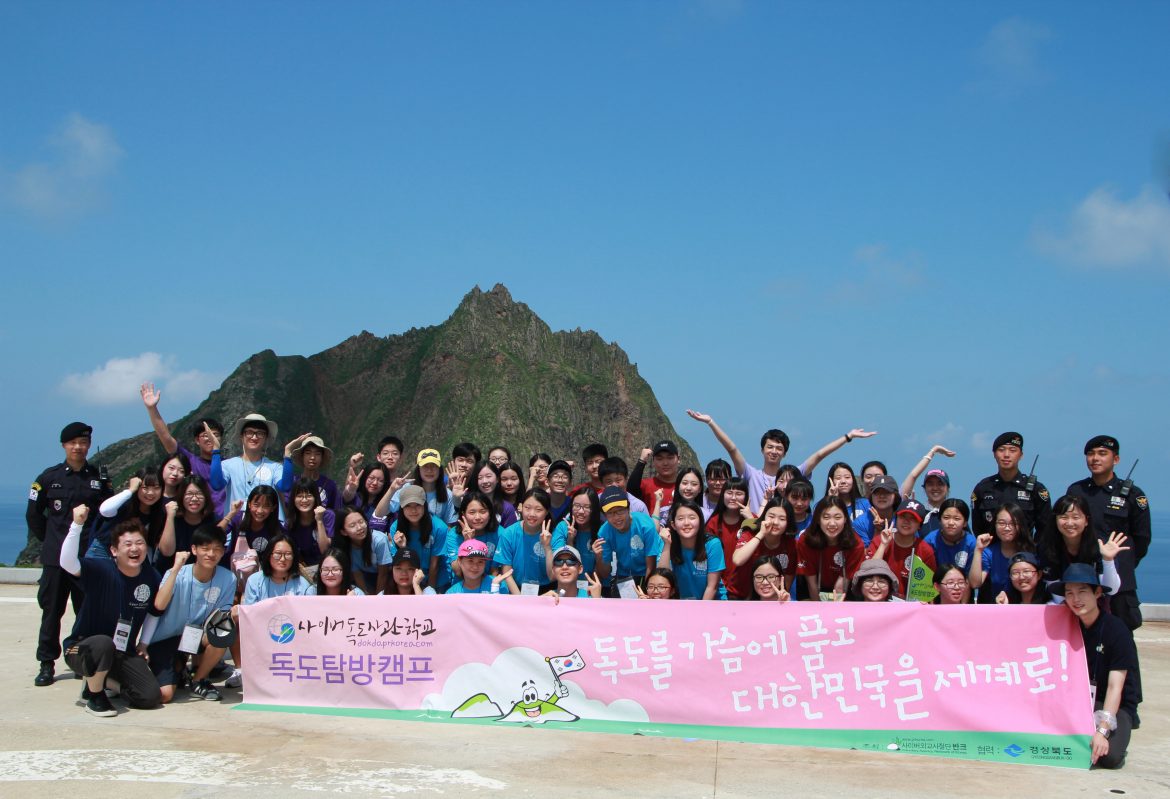The Dokdo Issue
- English
- 한국어
Korea’s perspective on Dokdo
In April, 2014, Japan’s Ministry of Education, Culture, Sports, Science and Technology approved a policy to insert false historical information in elementary school textbooks. The textbooks stated that Dokdo is Japan’s indigenous territory and that Korea is illegally occupying Dokdo. This is on par with other actions of Japan’s rightist movement, such as revisiting of the Yasukuni Shrine by the extreme-rightist Shinzo Abe’s administration, glorifying the Sino-Japanese and the Russo-Japanese Wars, and omitting information about “comfort women” from the textbooks. In comparison to Germany’s recognition of the Oder-Neisse line as an act of reflecting its past, Japan’s claim on Dokdo demonstrates the country’s attempts to alter the course of history.
In 1905, Japan forcibly seized Dokdo, then part of Joseon (the last dynasty of Korean history; 1392-1910), under claims that it was an ownerless land in order to strengthen its position against Russia in the Russo-Japanese Wars. After the end of World War II, Japan, as one of the defeated countries, was forced to return all territory seized under imperialism to the rightful owners. Nevertheless, Japan still insists that Dokdo is Japan’s territory – they even changed their original argument from claiming that no country possessed Dokdo before they occupation in 1905 to new assertions in 1953 that Japanese diplomatic documents marked Dokdo as Japan’s indigenous territory.
However, many historical documents prove that Dokdo was always historically Korea’s territory. Geography books, such as Sejong Sillok (1454) and Dong’guk Munheon Bigo (1710) that were published during the Joseon dynasty, designated Dokdo as part of Ulleungdo, another island of Joseon, justifying that Joseon had sovereignty over Dokdo. In addition, the Korean Empire proclaimed Dokdo a part of Ulleungdo-gun (gun: county in Korean) in Imperial Edict No.41 (1900).
Even Japan’s public documents such as ‘The Tottori-han’s Submission’ (1693) and ‘The Dajokan Order’ (1877) emphasize that Dokdo is not part of Japan. These documents directly contradict Japan’s current claim that Dokdo was an unclaimed territory. Moreover, Supreme Commander for the Allied Powers Index Number (SCAPIN) 677 in 1946, a memorandum that sealed the range of territories that would be changed after the end of the Second World War, excluded Dokdo from its administrative and governmental district. These documents add to the evidence that Dokdo is not under the dominance of Japan and that such fact has been globally acknowledged, even by Japan.
Official documents from Korea and Japan along with international statements from events such as the Potsdam and Cairo conferences refute the Japanese government’s unjust claim on Dokdo.
Despite the evidence, the Japanese government still denies Korea’s claim to Dokdo. Japan’s current assertions on Dokdo can be explained as threat to Korea’s sovereignty and a repetition of the imperialism that triggered World War II in the past.
References
Hosaka, Y. (2010, September 15). Daehanminguk Dokdo [Dokdo of Korea]. Seoul, Korea: Sejong University Dokdo Research Institute, & Chaek-Mun.
Jeon, S. (2013, August 24). Ilbon-eun Wae Dok-il-gwa Jungbandae-eh Gil-lo Gal-gga [Why is Japan taking the opposite direction from Germany]. DongA News. Retrieved from http://news.donga.com/3/all/20130824/57197903/1
Kim, Y. (2014, April 14). Dokdo-neun Neo-ko Ouianbu-neun Bbae-go… Deo Gyo-myo-hae-jin Gwageosa Dobal [Including ‘Dokdo’ and excluding ‘Comfort Women’.. Sneakier Provocation of History]. Segye News. Retrieved from http://www.segye.com/content/html/2014/04/04/20140404003947.html?OutUrl=naver
Ministry of Foreign Affairs, Republic of Korea. Dokdo, Beautiful Island of Korea. In Ministry of Foreign Affairs, Republic of Korea. Retrieved from http://dokdo.mofa.go.kr/eng/pds/pdf.jsp
Northeast Asian History Foundation. (2012, September 6). Ten Truths About Dokdo Not Known in Japan. In Dokdo Research Institute. Retrieved from http://www.nahf.or.kr/Data/board_100/dokdo_Truth/English.pdf













